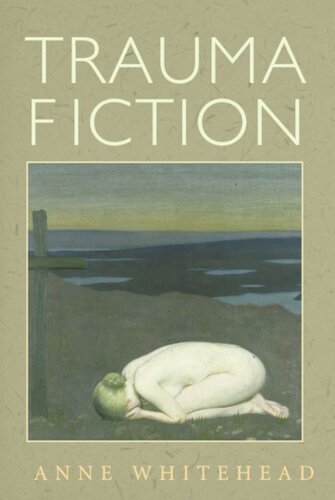

Most ebook files are in PDF format, so you can easily read them using various software such as Foxit Reader or directly on the Google Chrome browser.
Some ebook files are released by publishers in other formats such as .awz, .mobi, .epub, .fb2, etc. You may need to install specific software to read these formats on mobile/PC, such as Calibre.
Please read the tutorial at this link: https://ebookbell.com/faq
We offer FREE conversion to the popular formats you request; however, this may take some time. Therefore, right after payment, please email us, and we will try to provide the service as quickly as possible.
For some exceptional file formats or broken links (if any), please refrain from opening any disputes. Instead, email us first, and we will try to assist within a maximum of 6 hours.
EbookBell Team

4.1
100 reviewsGBS_insertPreviewButtonPopup('ISBN:9780748618576);
'Displays intelligence, deep understanding of the conceptual issues surrounding trauma as a literary subject and originality. The book marks an important step forward in the development of trauma studies.'
- Cathy Caruth, Winship Distinguished Professor of Comparative Literature and English, Emory University
The literary potential of trauma is examined in this book, bringing trauma theory and literary texts together for the first time.
Trauma Fiction focuses on the ways in which contemporary novelists explore the theme of trauma and incorporate its structures into their writing. It provides innovative readings of texts by Pat Barker, Jackie Kay, Anne Michaels, Toni Morrison, Caryl Phillips, W. G. Sebald and Binjamin Wilkomirski. It also considers the ways in which trauma has affected fictional form, exploring how novelists have responded to the challenge of writing traumatic narratives, and identifying the key stylistic features associated with the genre.
In addition, the book introduces the reader to key critics in the field of trauma theory such as Cathy Caruth, Shoshana Felman and Geoffrey Hartman. The linking of trauma theory and literary texts not only sheds light on works of contemporary fiction, it also points to the inherent connections between trauma theory and the literary which have often been overlooked. The distinction between literary theme and style in the book opens up major questions regarding the nature of trauma itself. Trauma, like the novels discussed, is shown to take an uncertain but productive place between content and form.
Key Features
Table of Contents
Acknowledgements
Part I: Theme
Introduction to Part I: Theme
1. The Past as Revenant: Trauma and Haunting in Pat Barker's Another World
2. Telling Tales: Trauma and Testimony in Binjamin Wilkomirski's Fragments
3. 'Ground that will remember you': Trauma and Landscape in Anne Michaels's Fugitive Pieces
Part II: Style
Introduction to Part II: Style
4. Othello in the Ghetto: Trauma and Intertextuality in Caryl Phillips's The Nature of Blood
5. The Butterfly Man: Trauma and Repetition in the Writing of W. G. Sebald
6. Recomposing the Past: Trauma and Improvisation in Toni Morrison's Jazz and Jackie Kay's Trumpet
Conclusion
Notes
Bibliography